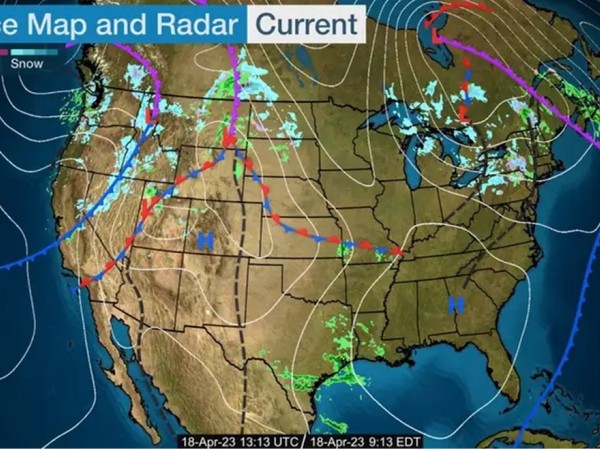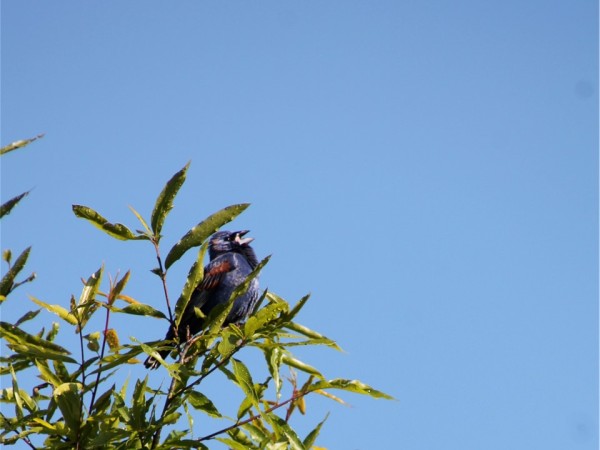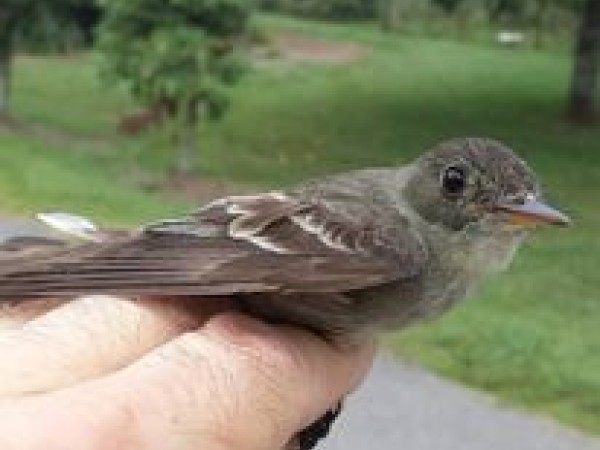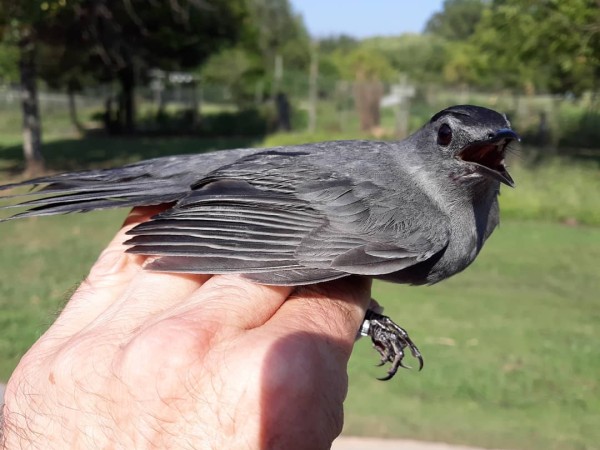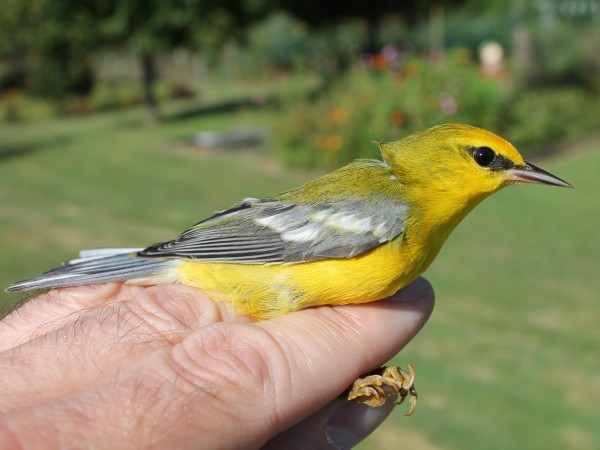2023 Spring Weather Forecasts for Migrating Songbirds-Report #4
Dear Journey North Readers,
It finally feels like migration season! Good flying conditions have allowed a plethora of migrants to arrive from the tropics. There have been two high-pressure areas that have been parked over the southern US and those southerly winds have allowed a lot of migration to take place. Along the Gulf coast, some of the new arrivals have included Tennessee Warbler, Worm-eating Warblers, Indigo Buntings, Orchard Orioles, Eastern Wood-Pewees, and Blue Grosbeaks.
Doing fieldwork this weekend I saw quite a few new species for the spring, including Blue-winged Warbler, Kentucky Warbler, Wood Thrush, Scarlet Tanager, and Gray Catbird. Those southerly winds helped push migrants up into New England and the upper Midwest, with Tree Swallows and Blue-gray Gnatcatchers arriving in Massachusetts, and Ruby-throated Hummingbirds and Rose-breasted Grosbeaks being seen in Michigan.
There was also a lot of movement out west, as well. There was a big arrival of Wilson’s Warblers and Lazuli Buntings in Arizona and New Mexico, along with Western Kingbirds and Casssin’s Kingbirds. Black-throated Gray Warblers and Townsend’s Warblers were common sights in California, while Orange-crowned Warblers and Tree Swallows made it as far as Oregon and Washington.
All these birds had better keep going while they can, because some big changes are about to occur. There is a very strong cold front that has moved into the western US, and it has strong north winds behind it. As it moves across the country, those north winds will force birds to land and stay put for a few days. For example, here in Chattanooga, we have been in the 80’s, but by the beginning of next week, we will only be in the 50’s, and may even see some morning frost!
Along the Gulf Coast, they may see their first fallout. Many migrants cross the Gulf of Mexico, which is an 18-hour non-stop flight, so when they arrive on the coast they are already pretty tired. If they encounter headwinds, they are too tired to fly against them and they land in big numbers, seeming to fall out of the sky, hence the term “fallout”. I have witnessed fallouts and they are quite spectacular! When that front reaches the east by the weekend, winds will have shifted back to the south out west, so migrants there will be able to start migrating again.
We are heading toward the peak of spring migration, so things will be getting exciting!
Take care,
David Aborn
University of Tennessee at Chattanooga
submitted 04/19/2023

